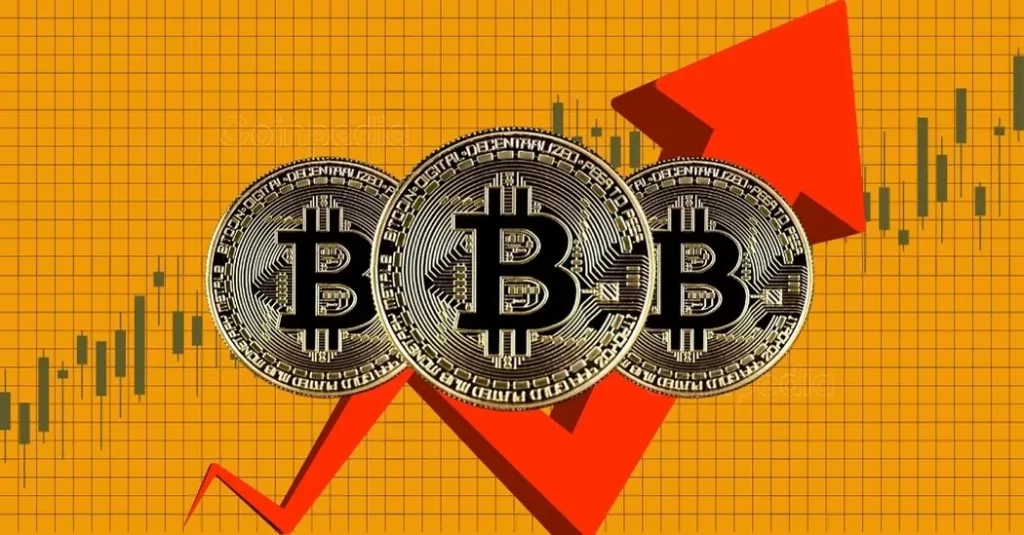Summary The widespread crypto distress in the wake of FTX’s sudden collapse has some asking, could this meltdown be the sector’s “subprime moment,” potentially leading to a cascade of selling in the broader financial markets? Institutions with large holdings in traditional markets - where stresses can therefore have wider ramifications - have tended to steer clear of cryptocurrencies. Crypto failures can dent investor sentiment and cause bouts of volatility, but we see diminishing routes for serious systemic contagion to more fully regulated financial markets. By Scott Woodcock, Senior Research Analyst The FTX ( FTT-USD ) collapse is a blow to the idea of finance industry disruption and a potential source of volatility, but we think systemic contagion into broader financial markets is unlikely. Today’s CIO Weekly Perspectives comes from guest contributor Scott Woodcock. In June 2007, Bear Stearns was forced to bail out several of its hedge funds. They had been buying what were then relatively obscure, highly leveraged credit securities that were exposed to subprime mortgages; 16 months later, the Global Financial Crisis was engulfing the entire world. More recently, reporting on the collapse of the FTX Cryptocurrency Exchange and its related entities suggests that as much as $10 billion of customer funds were inappropriately removed from the exchange. At least $1 billion is apparently still unaccounted for. Bitcoin ( BTC-USD ), which was already down 60% from its peak, has fallen another 30% since FTX went under. Reckless risk-taking and misappropriating customer funds are very different things. Nonetheless, the widespread crypto distress in the wake of FTX’s sudden collapse has some asking, could this meltdown be the sector’s “subprime moment,” potentially leading to a cascade of selling in the broader financial markets? Liquidity Crunch The failure of FTX, which filed for bankruptcy protection on November 11, has raised serious questions about the transparency, regulation and ethics of the $1 trillion cryptocurrency market. Nominally, FTX operated as an exchange on which customers could trade and hold cryptocurrencies. But when press reports questioned its solvency, customers started withdrawing funds from the exchange in high volumes, and an inadequate pool of liquid assets left the company unable to meet the redemptions. Exchanges typically segregate unmargined customers assets, so they should not experience this sort of liquidity crunch. However, it appears that FTX inappropriately used customer assets as collateral to finance the operations of Alameda Research, the firm’s proprietary trading and investment business. When customers tried to sell those assets, the result was effectively a run on a shadow bank. The incident has raised fears about other large cryptocurrency exchanges, many of which operate offshore, like FTX, in jurisdictions that do not have stringent requirements around segregation and safeguarding of customer funds. Failures One reason we do not believe FTX will prove to be the Bear Stearns of a crypto-induced market crash is that it is far from the industry’s first big failure. The industry’s Bear Stearns moment arguably happened back in May, when the TerraUSD ( UST-USD ) algorithmic “stablecoin,” which was supposed to exhibit a 1:1 relationship with the U.S. dollar but was not fully backed by liquid assets, effectively “broke the buck.” The Terra/Luna ( LUNC-USD ) ecosystem had a market capitalization close to $50 billion at the time, and the event led to the unwinding of a significant amount of leverage in the crypto universe and the failure of some of the weakest players in the industry. The silver lining is that this clear-out limited the damage wrought by later, large failures such as that of FTX. The Terra/Luna collapse also lent impetus to this year’s general crypto sell-off. According to CoinMarketCap, the total market capitalization of all recorded cryptocurrencies has fallen from almost $3 trillion in November last year to around $800 billion today. That means there are five listed companies with market capitalizations bigger than the entire cryptocurrency universe. The largest, Apple ( AAPL ), has a market cap three times larger than the crypto market. Even at $3 trillion, the crypto market was small compared with the $110 trillion-plus market capitalization of global listed equities. Systemic Furthermore, institutions with large holdings in traditional markets - where stresses can therefore have wider ramifications - have tended to steer clear of cryptocurrencies. While some institutional investors had become interested in offering crypto products to their customers, the combination of regulatory concerns and volatility caused them to proceed slowly. According to the Fidelity Digital Assets Survey 2022 , while almost half of high-net worth investors have adopted some exposure within the last two years, fewer than 7% of pension plans, endowments and foundations have done so. Even in the hedge fund world, outside of crypto specialists, only 10% of managers had made investments. A May 2022 paper from the Bank for International Settlements similarly found very low banking sector exposure to crypto. Evaluating risks posed by digital assets, the U.S. Treasury Department’s Financial Stability Oversight Council warned in its October 3 report that interconnections between crypto assets and the traditional financial system had been increasing, and that further connections would raise the risk of contagion, but it also observed that, so far, these connections are “relatively limited.” It’s worth noting that the most recent systemic crisis in financial markets originated with supposedly staid and boring U.K. government bonds, not cryptocurrencies - because a relatively small number of U.K. pension funds hold such a large concentration of those government bonds. Contagion In summary, the crypto universe remains relatively small in comparison to other risk assets like equities, with limited overlap for contagion into traditional markets. The financial and regulatory fallout from the FTX failure is likely to keep it that way for longer, in our view. For example, FTX had planned an aggressive entrance into the cryptocurrency derivatives market and appeared to be eyeing a longer-term move into traditional asset classes such as equities, thereby mounting a disruptive challenge to incumbent exchange operators such as the Chicago Mercantile Exchange (CME Group) and Intercontinental Exchange ((ICE)). Unsurprisingly, its regulatory application has now been withdrawn. While decentralized finance enthusiasts are likely to continue their search for disruptors, the heady days of startups taking on the likes of CME Group or Visa - and thinking they can do so without inviting burdensome regulatory scrutiny - are probably over. In this context, crypto failures can certainly dent investor sentiment and cause bouts of volatility, but we see diminishing routes for serious systemic contagion to more fully regulated financial markets. In Case You Missed It U.S. Consumer Confidence: -2.0 to 100.2 in November S&P CoreLogic Case-Shiller Home Price Index: -1.5% month-over-month, +10.4% year-over-year in September ((NSA)); -0.8% month-over-month ((SA)) U.S. 3Q GDP (Second Preliminary): +2.9% quarter-over-quarter annualized China Manufacturing Purchasing Managers’ Index: -1.2 to 48.0 in November Eurozone Consumer Price Index: +10.0% year-over-year in November (core CPI +5.0% year-over-year in November) U.S. Personal Income and Outlays: Personal income rose +0.7% month-over-month in October; personal consumption expenditures increased +0.8% month-over-month in October; the personal savings rate fell to 2.3% in October ISM Manufacturing Purchasing Managers’ Index: -1.2 to 49.0 in November U.S. Employment Report: Nonfarm payrolls rose +263.0K and the unemployment rate remained at 3.7% in November What to Watch For Monday, December 5: ISM Services Index Wednesday, December 7: Eurozone 3Q GDP (Final) Japan 3Q GDP (Final) Friday, December 9: U.S. Producer Price Index - Investment Strategy Group This material is provided for informational purposes only and nothing herein constitutes investment, legal, accounting or tax advice. This material is general in nature and is not directed to any category of investors and should not be regarded as individualized, a recommendation, investment advice or a suggestion to engage in or refrain from any investment-related course of action. Investment decisions and the appropriateness of this material should be made based on an investor's individual objectives and circumstances and in consultation with his or her advisors. Information is obtained from sources deemed reliable, but there is no representation or warranty as to its accuracy, completeness or reliability. All information is current as of the date of this material and is subject to change without notice. Any views or opinions expressed may not reflect those of the firm as a whole. Neuberger Berman products and services may not be available in all jurisdictions or to all client types. Investing entails risks, including possible loss of principal. Investments in hedge funds and private equity are speculative and involve a higher degree of risk than more traditional investments. Investments in hedge funds and private equity are intended for sophisticated investors only. Indexes are unmanaged and are not available for direct investment. Past performance is no guarantee of future results. This material is not intended as a formal research report and should not be relied upon as a basis for making an investment decision. The firm, its employees and advisory accounts may hold positions of any companies discussed. Specific securities identified and described do not represent all of the securities purchased, sold or recommended for advisory clients. It should not be assumed that any investments in securities, companies, sectors or markets identified and described were or will be profitable. This material is being issued on a limited basis through various global subsidiaries and affiliates of Neuberger Berman Group LLC. Please visit www.nb.com/disclosure-global-communications for the specific entities and jurisdictional limitations and restrictions. The “Neuberger Berman” name and logo are registered service marks of Neuberger Berman Group LLC. © 2009-2022 Neuberger Berman Group LLC. All rights reserved. Original Post Editor's Note: The summary bullets for this article were chosen by Seeking Alpha editors.















